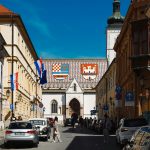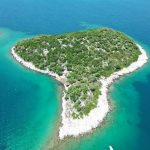Just how do Croatia’s popular destinations fare in reality?
As SEEbiz reported on the 21st of July, 2017, Croatia’s main chunk of income in the 21st century undoubtedly comes from tourism, which sees increasing numbers year on year, but unfortunately, and much like everything and anything else, there is another side to the coin.
Perhaps the most obvious issue is the fact that the Croatian authorities and bodies of law are failing to face the less than positive social and environmental consequences of mass tourism, we’ve seen action taken recently on Hvar and in Dubrovnik, with the threat of fines for those who fail to respect the law, the dresscode and the code of conduct. For some, it comes as a bit too little, and a bit too late. SEEbiz refers to a BBC article which tells us a bit more.
The BBC stated that Croatia’s most popular tourist destination is literally drowning under a crowd of tourists and suffering from the negative impact of large numbers of cruisers. Three guesses as to where we’re talking about? Yes, you’re right, it’s Dubrovnik.
The daily pressure on the city not only slowly destroys the infrastructure, but also the local autochthonous culture which is all but being eradicated in the name of fictional merits such as ”Game of Thrones” being filmed, among other things. Local authorities do not take this into account, or at the very least have not been until now. As a result of the city gradually falling under the ownership of film, TV, cheap tourism and general chaos, local people have been silently condemned to a reality which in actual fact, treats them rather like second class citizens, at least during the summer season. Such a ”surrender” to tourist agencies and camera crews is making every day life in Dubrovnik hell on earth for many residents who are simply trying to live normal lives.
Different practices of local management and ”keeping the peace” in the context of tourism are more than rare in Croatia, given the fact that tourism is the biggest industry the country currently possesses. However, some cases may serve as an example to cities like Dubrovnik, which is beginning to lose its way in a most serious manner. One of these shining examples is the Dalmatian coastal town of Šibenik, which, in stark contrast to the Pearl of the Adriatic, has been gaining international popularity only in recent years.
While Dubrovnik was once an autonomous republic under the name of Ragusa (Dubrovacka Republika) and was indeed very successful for very many years in international trade, seafaring and diplomacy, Šibenik lived quietly on the sidelines owing to trades such as aluminum production, and only when those days came to their end were other money-making solutions sought.
“While Dubrovnik has been exposed to huge tourism pressure for a long time, Šibenik has been sidelined. Šibenik has preserved some of its values away from the often harsh realities of tourism exploitation, and then some of the younger people made some clever moves” stated Ivo Kunst of the Zagreb Institute for Tourism, adding that he thinks turning to EU funds and restoring historic fortresses were of significant importance in this.
“It will be difficult to defend it [from mass tourism] because in Croatia, at the state level, there is no developmental alternative when it comes to the Adriatic” states Kunst.
Better practice of ”’resistance” when we’re talking about the possibility of negative tourism side effects, can only be sought out in the Mediterranean, according to Kunst’s opinion. For example, Ibiza and Malta, which also have the fame of UNESCO protected sites, but are well catered to regarding tourism and its downsides. Human traffic is generally maintained at a tolerable level, with care to preserve the daily lives of the local population.
When one thinks of Ibiza, one might be met with a rather negative image of tourism, and indeed, Spain, otherwise known as the king of the all inclusive hotel business, has made several mistakes in cheapening their tourist offer in the past. This being said, the country is well aware of the problems this can cause and has had time to perfect its response.
Could Dubrovnik learn a thing or two from not only Šibenik, but the management skills of both Spain and Malta?
Excerpts taken and translated from SEEbiz.eu








